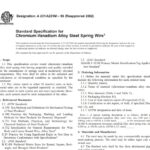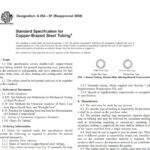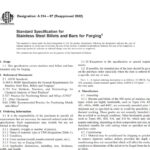Standard Test Methods for
Determining Sediment Concentration in Water Samples1
This standard is issued under the fixed designation D 3977; the number immediately following the designation indicates the year of
original adoption or, in the case of revision, the year of the last revision. A number in parentheses indicates the year of last reapproval. A
superscript epsilon (e) indicates an editorial change since the last revision or reapproval.
1. Scope
1.1 These test methods cover the determination of sediment
concentrations in water and wastewater samples collected from
lakes, reservoirs, ponds, streams, and other water bodies. In
lakes and other quiescent-water bodies, concentrations of
sediment in samples is nearly equal to concentrations at
sampling points; in most instances, sample concentrations are
not strongly influenced by collection techniques. In rivers and
other flowing-water bodies, concentrations of sediment in
samples depend upon the manner in which the samples are
collected. Concentrations in isokinetically-collected samples
can be multiplied by water discharges to obtain sediment
discharges in the vicinity of the sampling points.
1.2 The procedures given in these test methods are used by
the Agricultural Research Service, Geological Survey, National
Resources Conservation Service, Bureau of Reclamation, and
other agencies responsible for studying water bodies. These
test methods are adapted from a laboratory-procedure manual2
and a quality-assurance plan.3
1.3 These test methods include:
Sections
Test Method A—Evaporation 8 to 13
Test Method B—Filtration 14 to 19
Test Method C—Wet-sieving-filtration 20 to 25
1.4 Test Method A can be used only on sediments that settle
within the allotted storage time of the samples which usually
range from a few days to a few weeks. A correction factor
must be applied if the dissolved-solids concentration exceeds
about 10 % of the sediment concentration.
1.5 Test Method B can be used only on samples containing
sand concentrations less than about 10 000 ppm and clay
concentrations less than about 200 ppm. The sediment need not

Click below to download Astm D 3977 – 97 (Reapproved 2002) pdf free
Click here to download Astm D 3976 – 92 (Reapproved 2001) Pdf Free Download






